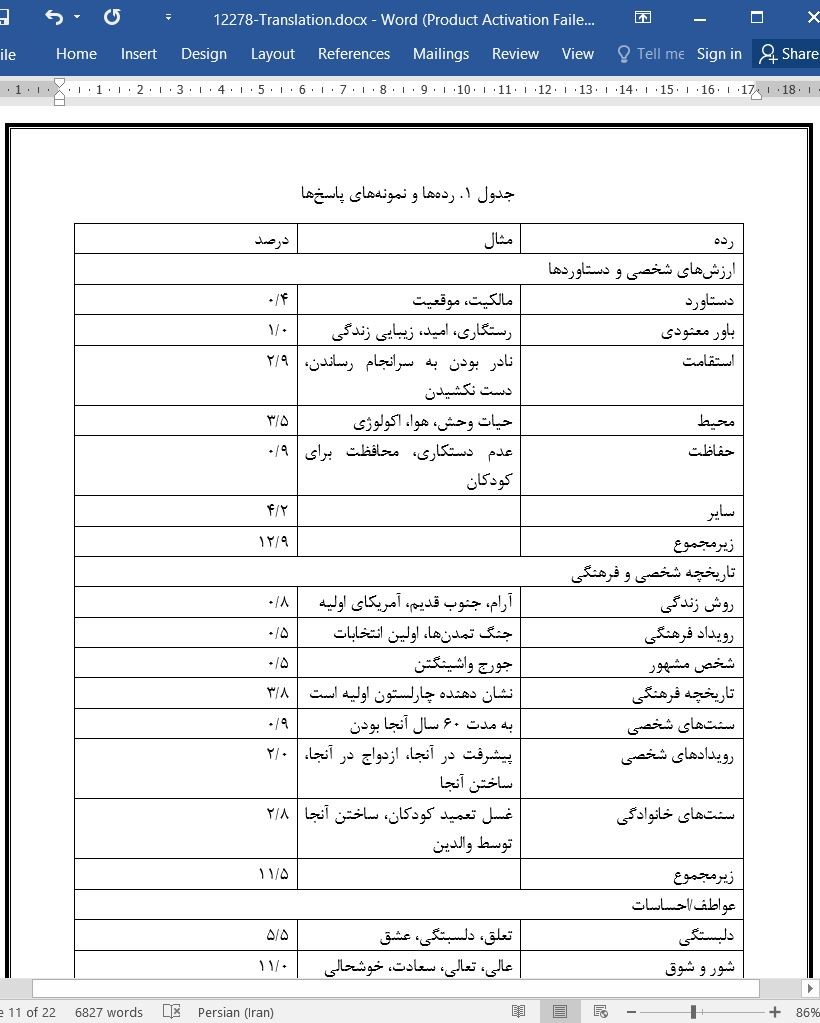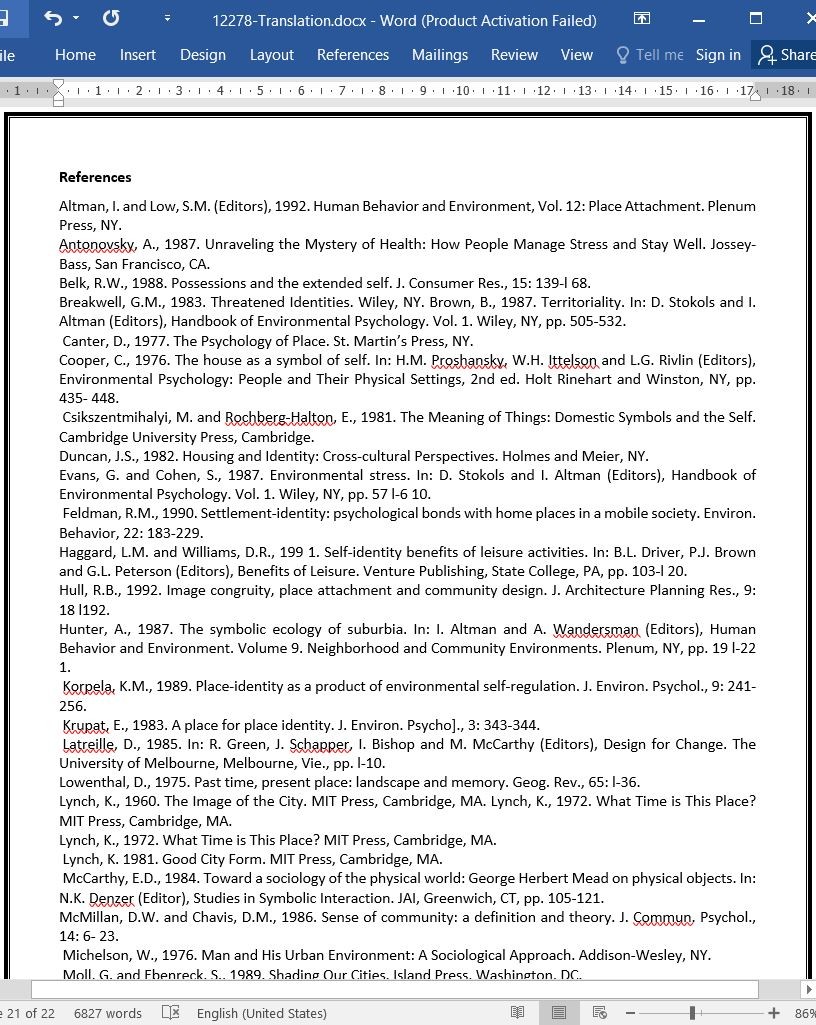
هویت مکان: نمادهایی از خویشتن در بافت شهری
چکیده
بافت شهری شامل نمادهایی (آیکونهایی) است که با ما درباره خویشتن ما و درباره کسانی که این نمادها به آنها تعلق دارند سخن میگویند. این جنبه از بافت شهری، سریشمی (یا چسبی) نامیده میشود که افراد را به محل متصل میکند. بحث این مقاله این است که این آیکونها سزاوار توجه بیشتری در تصمیمات مربوط به طراحی شهری هستند زیرا در هویت مکان و در نتیجه، هویت خویشتن، سلامتی، احساس اجتماع، و حس مکان نقش دارند. برای بررسی ماهیت این معانی مبتنی بر مکان، دادهها از ساکنان چارلستون ، SC، پس از طوفان هوگو در سال ۱۹۸۹ جمعاوری شدند. از ساکنان این محل درخواست شد که آن چه را که از دست دادهاند – نه فقط ویژگیهای فیزیکی تخریب شده توسط وزش باد یا بارش باران، بلکه همچنین خاطرات و معانی موجود در این ویژگیها را - شرح دهند. ساکنان، چند نوع ویژگی را به عنوان آیکونهای با اهمیت ویژه شناسایی کردند: جنگلها شهری (۳۰ درصد)، کلیساها (۲۷ درصد)، خانهها (۱۹ درصد)، ساختمانهای دولتی (۶ درصد)، مکانهای مربوط به رویدادهای تاریخی (۶ درصد)، و ساختارهای خردهفروشی (۵ درصد). توضیحات ساکنان برای این که چرا این آیکونها ویژه هستند در شش رده اصلی قرار میگیرد. این آیکونها؛ اتصالات مربوط به گذشته ساکنان را به همراه دارند؛ نماد گروههای ویژهای هستند که ساکنان به آنها متعلق هستند یا با آنها شناسایی میشوند؛ ویژگی متمایزی به جامعه مربوطه میدهند؛ نیازهای کارکردی مهم را براورده میسازند؛ احساسات یا عواطف را برمیانگیزند؛ و به عنوان یادآورهایی از دستاورها و دغدغههای شخصی هستند. ما به این نتیجه رسیدیم که هویت مکان، اگرچه ذهنی و جزئی است، میتوان آن را از طریق اقدامات حساس در زمینه توسعه زمین مورد ارزیابی و مدیریت قرار داد.
پیشگفتار
هدف این مطالعه، بررسی ماهیت تجربی و مفهومی هویت مکان است به طوری که بتوان آن را بهتر شناخت، ملموستر ساخت، و در نهایت، تصمیمات مربوط به برنامهریزی و طراحی زیست محیطی را آگاهانه انجام داد. به ویژه، هدف ما بررسی و توسعه هویت مکان و مفاهیم مربوطه از طریق تجزیه و تحلیل مطالعه موردی آسیب ناشی از طوفان در چارلستون SC است. در سپتامبر سال ۱۹۸۹، طوفان هوگو به درختان، ساختمانها و سایر ویژگیهای فیزیکی همسایگان چارلستون صدمه زد. ما از این «فرصت» استفاده کردیم تا از ساکنان درباره معانی و ارزشهای مهم نمادگذاری شده توسط ویژگیهای از دست رفته و آسیب دیده محل سوال کنیم. قبل از شروع مطالعه تجربی، مروری از تحقیقات مربوطه فراهم میشود.
Abstract
The urban fabric contains symbols (icons) that tell us something about ourselves and something about those to whom the symbols belong. This aspect of the urban fabric has been called the glue that bonds people to place. The contention of this paper is that these icons deserve special attention in urban design decisions because they contribute to place identity and ultimately to self identify, health, sense of community and sense of place. To explore the nature of these place-based meanings, data were collected from residents of Charleston, SC following hurricane Hugo in 1989. Residents were asked to describe what they had lost to the storm, not just the physical features blown away by winds or damaged by rains, but the memories and meanings embodied by these features. Residents identified several types of features as icons of special significance: urban forest (30%), churches (27%), homes (19%), public buildings (6%), places associated with historic events (6%) and retail structures (5%). Residents' explanation for why these icons were special fell into six major categories. The icons: provided connections to residents' pasts; symbolize the social groups to which residents belonged or with which they identified; gave the community its distinctive character; satisfied important functional needs; evoked emotions or feelings; and served as reminders of personal accomplishments and concerns. We concluded that place identity, although subjective and subtle, can be assessed and managed through sensitive land development efforts.
Introduction
The purpose of this study was to explore the conceptual and empirical nature of place identity so that it might be better understood, made more tangible, and ultimately inform environmental design and planning decisions. More specifically, the purpose was to explore and develop place identity and related concepts through a case study analysis of hurricane damage in Charleston, SC. In September 1989, hurricane Hugo damaged or destroyed trees, buildings and other physical features of Charleston’s neighborhoods. We used this “opportunity” to ask residents about the important meanings and values symbolized by the lost and damaged place features. Before launching into the empirical study, a review of the relevant literature is provided.
چکیده
پیشگفتار
روش
نتایج و بحث
تاریخچه محل و تاریخچه خویشتن
گروههای اجتماعی
کاراکتر متمایز کننده
تناسبی شخص-محیط
عواطف و احساسات
ارزشها و دستاوردهای شخصی
تفاوتهای میان پاسخ دهندگان
پیامدها
نتیجهگیری
منابع
Abstract
Introduction
Method
Results and discussion
History of place and of self
Social groups
Distinctive character
Person-environment fit
Emotion andfeelings
Personal values and accomplishments
Differences among respondents
Implications
Conclusion
References
- اصل مقاله انگلیسی با فرمت ورد (word) با قابلیت ویرایش
- ترجمه فارسی مقاله با فرمت ورد (word) با قابلیت ویرایش، بدون آرم سایت ای ترجمه
- ترجمه فارسی مقاله با فرمت pdf، بدون آرم سایت ای ترجمه



